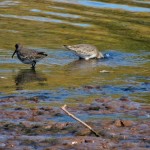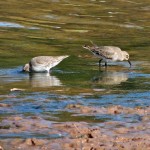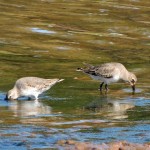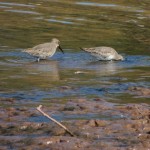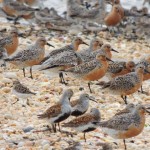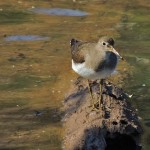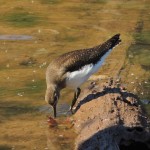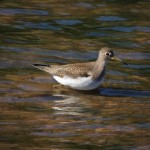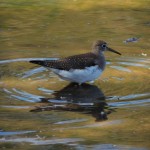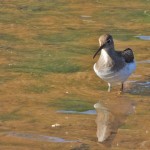15 October 2015. Valley Inn Burlington / Hamilton, ON. At the edge of town there is a once-busy but now tired corner called Valley Inn. It used to have all the importance and trappings of a regional crossroad (including an inn), but that was well over a hundred years ago. Now it’s an area of underused and closed roads flanked by a major rail line and interlaced with the estuary of a minor river, and remote shallow reaches of the harbour. When you’re there you can understand its once-importance but the inn is long gone and the sole remaining house is in a desperate state of repair; it’s all a bit seedy. Except to fish, count trains or watch birds there are few reasons to go to Valley Inn. But I was there today and found a Solitary Sandpiper, not an especially unusual bird, but a small a group of us spent quite a bit of time admiring and photographing it.
I had wrapped up a long walk to some distant mudflats in hope of well, anything. Perhaps it was the gusty westerly winds, I don’t know, but it seemed as if all the birds had blown away. I kept looking skywards because when the autumn turns cool and the wind blows anywhere out of the west to north quadrant, that’s when the eagles, hawks, falcons take flight. The odd Sharp-shinned or Red-tailed Hawks drifted by, but there was no suggestion of purpose in them. A decent sized group of Turkey Vultures though seemed to be following some kind of invisible west-bound pathway, so I decided to park at Valley Inn as a likely spot to watch for more.
It was a little dull until someone pointed out a couple of small shorebirds working the muddy margins. I knew right away by the rather long downward-drooping bills that they were Dunlins. But then I started questioning myself. Why had I jumped to a conclusion? Other than their bills, they looked only similar to the Dunlins I’d seen in May. So biting back my hasty identification, I settled in to watch and examine them a bit more closely.
They were overall grayish though quite a bit lighter below and they were probing the mud deeply and rhythmically. Did that make them Dunlins? Or how about something less familiar? I started to review my mental who’s who of shorebirds when another, more experienced, birder joined me and confidently confirmed the Dunlin i.d. I suppose he made me feel better about my first-impressions identification. I wondered, should I have been more secure of myself with my first call, or is a bit of insecurity a good thing? The lesson learned was a reminder of the difference many species exhibit between spring and fall plumage: the former tending towards the flamboyant while the latter is more suitable for the office.
In the slide show below, just for comparison, I have included a shot of a group of spring-plumage Dunlins (foreground) along with several absolutely gorgeous Red Knots.
It was shortly after pondering the Dunlins that I found the Solitary Sandpiper. It worked its way towards us along a grubby shoreline, one on which I certainly wouldn’t walk barefoot. In the picture immediately below, you can make out a bit, almost a vestige, of webbing between the toes. (You can enlarge the picture slightly by clicking on it.) At risk of confusing things, I point this out because, in the cases of both Semipalmated Sandpipers and Semipalmated Plovers, they too have this limited webbing on their feet and that is why they have the adjectival component ‘semipalmated’ as part of their common names. I’m just as happy the Solitary Sandpiper is called what it is, despite its feet. Actually, solitary is a very good descriptor, I don’t think I’ve ever seen more than one, maybe two, at a time and all the books agree that they usually travel alone or in small groups.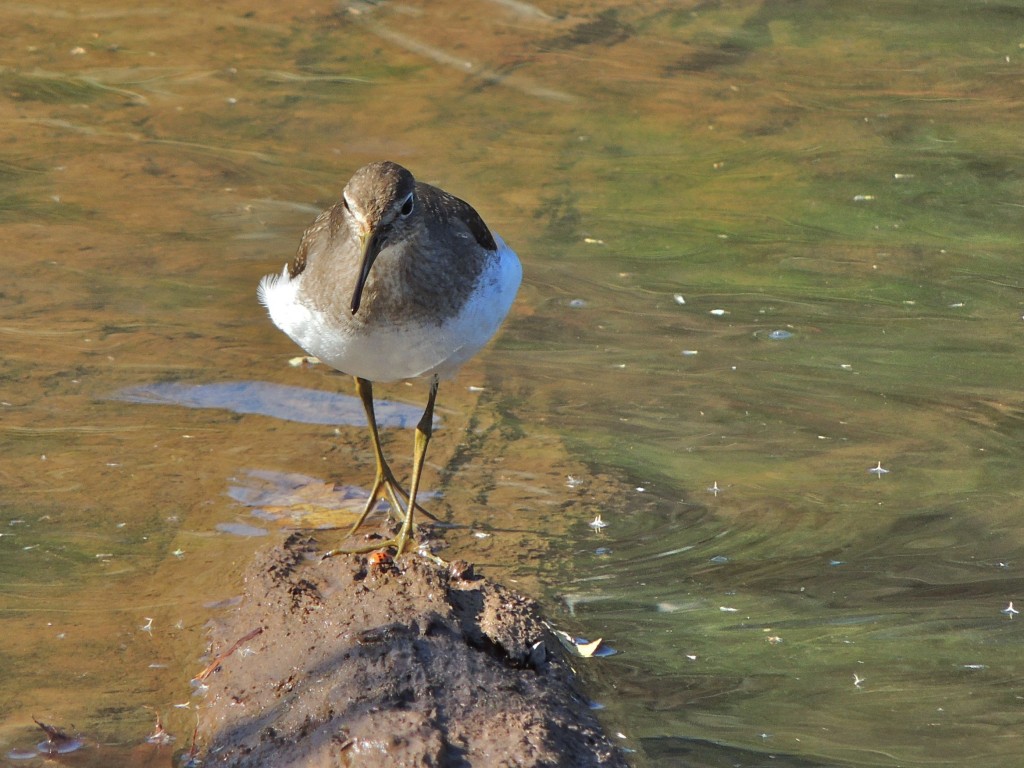
The rather poised and unpretentious bearing of this Solitary Sandpiper made it my bird of the day. The fall-plumage Dunlins, while nice and certainly instructive, really didn’t capture my imagination in the quite the same way.
These two galleries are visible only on the website, not if you’re reading this as an email.
